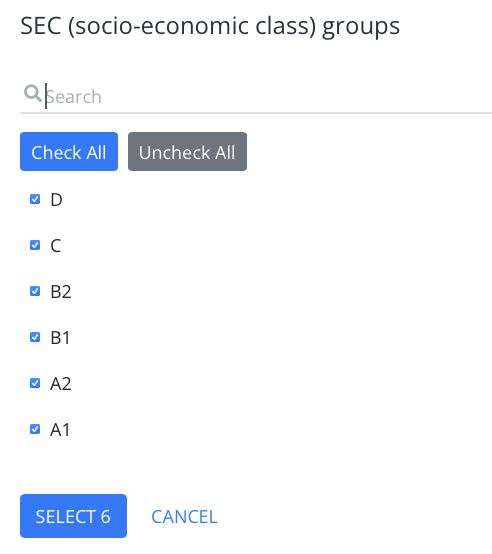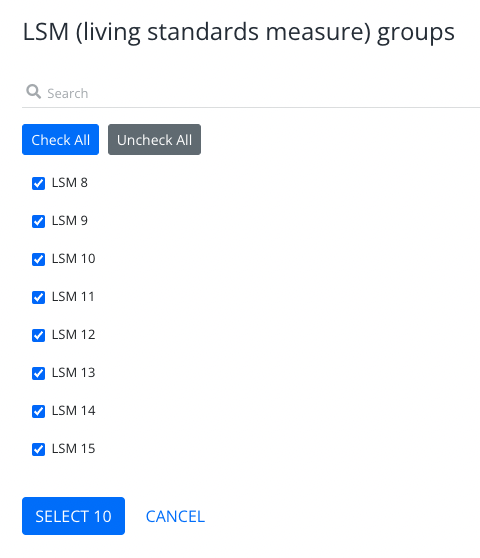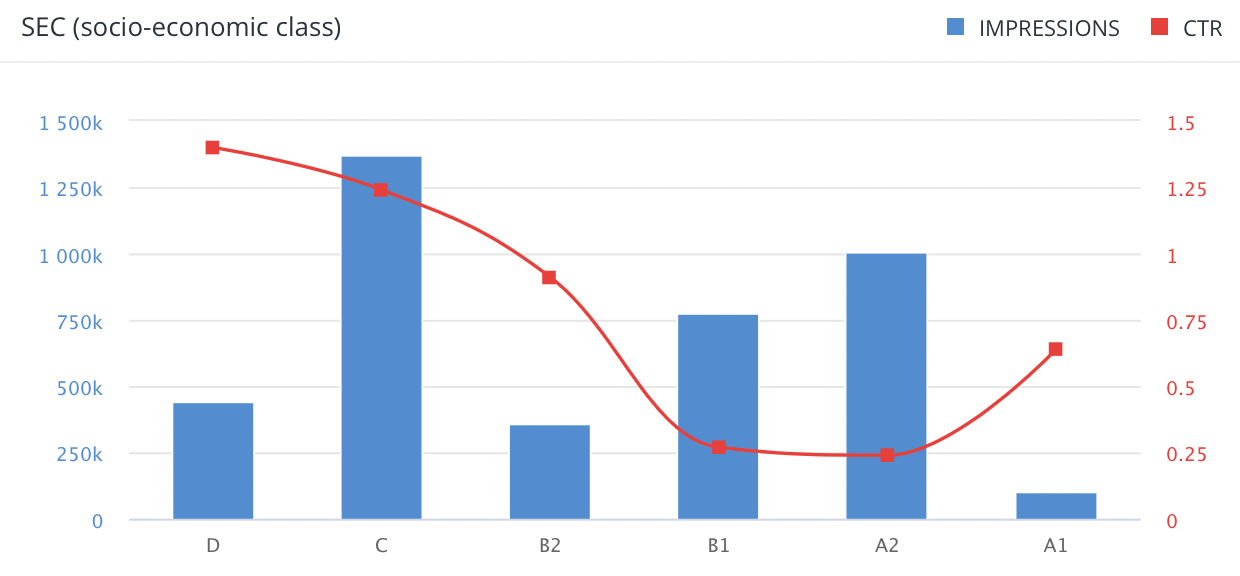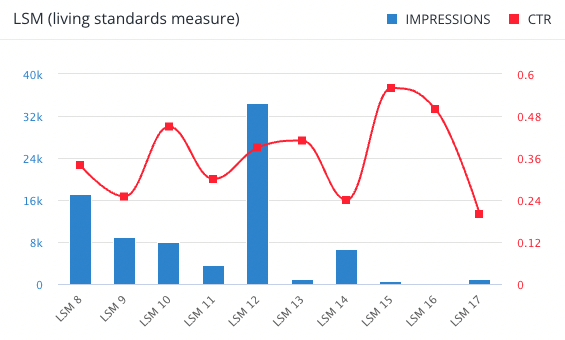Socio Economic Class (SEC) & Living Standards Measure (LSM) targeting
What is Socio Economic Class (SEC) & Living Standards Measure (LSM) targeting?
Socio economic class and living standard measure targeting - is the segmentation of customer base into high, middle, low class users. The groups can also represent the purchasing power of a user - the higher the group, the higher purchasing power. Users are grouped based on concrete parameters that can be identified from users browsing history.
Both classification methods (SEC & LSM) represents the same classification, however the use of specific method depends on the applicable country.
Eskimi indicates 6 main SEC groups and and 10 LSM classes:
| Class/group | SEC | LSM |
| A1, A2 | 16-17 | |
| Middle | B1, |
12-15 |
| Lower | C, D | 8-11 |
From the rich data points in Eskimi DMP, we were able to build comprehensive SEC and LSM targeting. There are key signals that Eskimi considers when calculating SEC and LSM:
Device price range - it is clear that the mobile device that you use can identify your social status. For example a higher price device indicates that you have the possibility to buy more expensive things. This is why Eskimi considers device price range when calculating SEC and LSM.
Location - it is undeniable that people living in capitals or large cities have a much higher purchasing power than those living in rural areas. Location signals groups people based on the location (city) they are seen the most.
Data Consumption quartiles - groups people based on their data consumption patterns. Naturally, if a person browses little on the internet it is possible to assume that his/hers social status is lower as they don’t have the luxury to always stay online.
3G / 4G use - groups people based on the most often seen connection type which ranges from 2G to 4G. If the person has the ability to be always online with a 4G network it means that they live in a location where network connection is good and and living standards are much higher.
| SEC | A1 | A2 | B1 | B2 | C | D |
| LSM | LSM 16-17 | LSM 12-15 | LSM 8-11 | |||
| Device |
$700+ | $500-$700 | $300-$500 | $200-$300 | $100-$200 | $1-$100 |
| Location | Largest cities only | Largest cities only | Largest cities only | Mix | Mix | Mix |
| Location tags | petrol_station, restaurant, movie, business_center, airway-airport, mall, central areas, private housing compound, hotel | -private coumpound + university + leisure +bakery +residential | any of the A1+A2, but only occasional, rare | any of the A1+A2, but only occasional, rare | village, suburb | rural areas, no recognizable location tags, village, suburb |
| 3G/4G use | Mostly 4G | 3G-4G | 3G | 3G | 2G-3G | 2G |
Why SEC & LSM targeting?
Socio economic class and living standard measure targeting allows brands globally to personalize their advertising based on different SEC and LSM groups: upper, middle and lower. For example, telecom brands can offer different bundles for relevant SEC and LSM.
Additionally, advertisers can only target a specific SEC and LSM group if they have an offer suitable for them. Banks/loan companies can target only lower class people as they are more likely to take a loan.
A great ICP for SEC and LSM targeting tends to be banks, mobile device manufacturers, FMCG, telco brands.
SEC & LSM features
Selection
SEC and LSM targeting can be instantly found in the campaign setup page. Clients do not need to upload their 1st party data to have SEC and LSM enabled. The feature is fully empowered by Eskimi.
Other targeting
SEC and LSM targeting can be combined with any other feature on Eskimi DSP. However, it is necessary to understand that applying additional targeting will narrow down the audience which will increase the CPM.
Reporting
The SEC and LSM report can be found in the general report section. Report displays impressions and CTR by SEC. The report is updated in real-time.
Limitations Limitations
- SEC and LSM targeting cannot be combined with PC, TV targeting.




